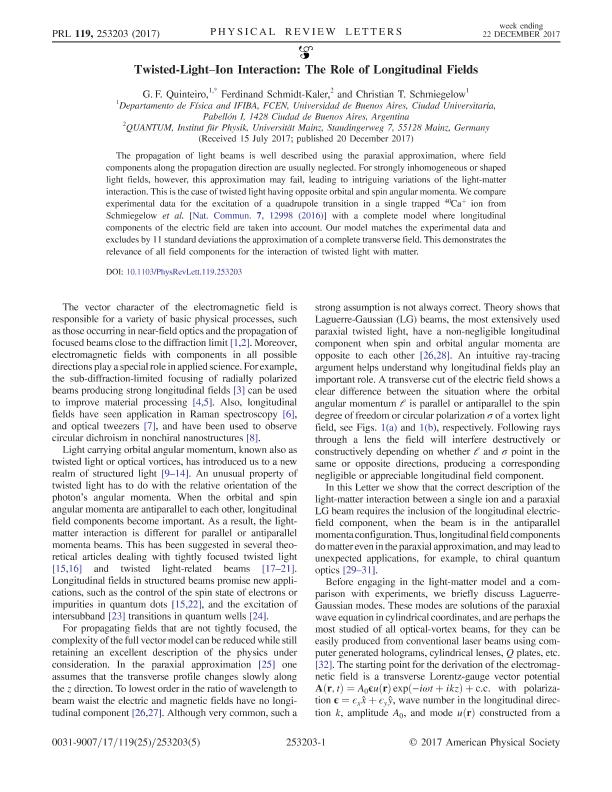Artículo
Twisted-Light-Ion Interaction: The Role of Longitudinal Fields
Fecha de publicación:
12/2017
Editorial:
American Physical Society
Revista:
Physical Review Letters
ISSN:
0031-9007
Idioma:
Inglés
Tipo de recurso:
Artículo publicado
Clasificación temática:
Resumen
The propagation of light beams is well described using the paraxial approximation, where field components along the propagation direction are usually neglected. For strongly inhomogeneous or shaped light fields, however, this approximation may fail, leading to intriguing variations of the light-matter interaction. This is the case of twisted light having opposite orbital and spin angular momenta. We compare experimental data for the excitation of a quadrupole transition in a single trapped Ca+40 ion from Schmiegelow et al. [Nat. Commun. 7, 12998 (2016)NCAOBW2041-172310.1038/ncomms12998] with a complete model where longitudinal components of the electric field are taken into account. Our model matches the experimental data and excludes by 11 standard deviations the approximation of a complete transverse field. This demonstrates the relevance of all field components for the interaction of twisted light with matter.
Palabras clave:
Haces Estructurados
,
Óptica Cuántica
,
Física Atomica
Archivos asociados
Licencia
Identificadores
Colecciones
Articulos(IFIBA)
Articulos de INST.DE FISICA DE BUENOS AIRES
Articulos de INST.DE FISICA DE BUENOS AIRES
Citación
Quinteiro, Guillermo Federico; Schmidt-Kaler, Ferdinand; Schmiegelow, Christian Tomás; Twisted-Light-Ion Interaction: The Role of Longitudinal Fields; American Physical Society; Physical Review Letters; 119; 25; 12-2017; 253203-253203
Compartir
Altmétricas




